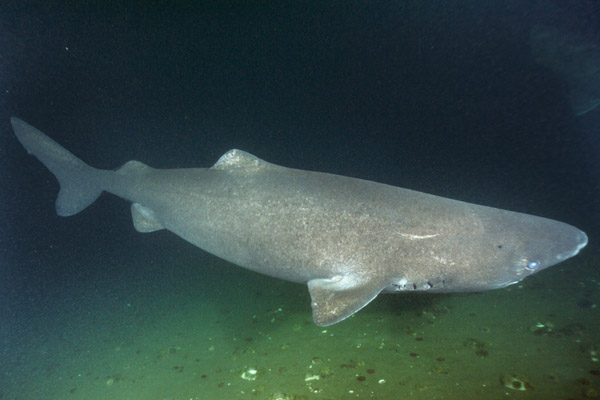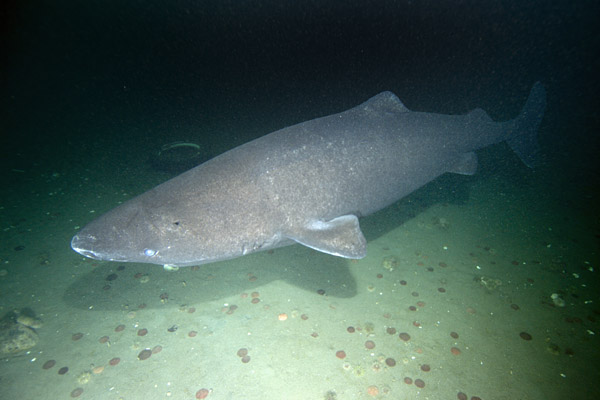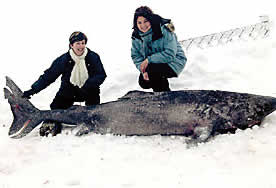Greenland Shark

Greenland Shark

Greenland Shark
This shark frequently has a relationship with a parasitic copepod, Ommatokoita elongata, that attaches itself to the cornea of the eye and feeds on the shark's corneal tissue; the resulting scar tissue leads to partial blindness of the shark. However, this does not occur in all Greenland sharks.[3] Also, studies show the Greenland shark could probably detect light from darkness. The copepod is a whitish-yellow creature that was said to be bioluminescent, but this was proven false by American shark parasitologist George Benz. Some theorize that the function of the copepod is to attract prey for the shark, like a fishing lure. This is suggested by the fact that these normally sluggish sharks have been found with much faster-moving animals (such as squid) in their stomachs. However, the theory of copepods acting as fishing lures is weakened by reports by Canadian wildlife biologists in Arctic Canada, where Greenland sharks have been snatching caribou from the water's edge. Biologists know little of the shark's reproduction and life cycle, aside from ovoviviparity; its lifespan may be as long as 200 years.


The flesh of a Greenland shark is poisonous when fresh. This is due to the presence of the toxin trimethylamine oxide, which, upon digestion, breaks down into trimethylamine, producing effects similar to extreme drunkenness. Occasionally, sled dogs that end up eating the flesh are unable to stand up due to the neurotoxins. However, it can be eaten if it is boiled in several changes of water or dried or rotted for some months (as by being buried in boreal ground, exposing it to several cycles of freezing and thawing). It is considered a delicacy in Iceland and Greenland.

















Comments